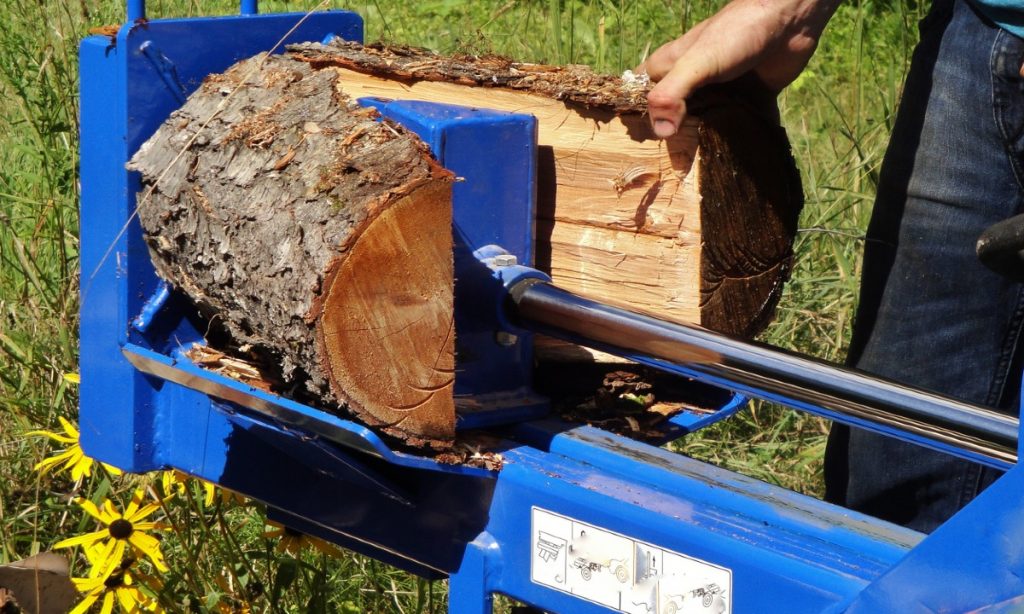How Strong Are Log Splitters Really?

An open fireplace or wood burner holds the power to give any place a feeling of warmth and comfort. The thought of running out of firewood, however, can be frustrating. Most people use axes and manual splitters to cut logs for their fireplace. While these methods are fine, they can take a lot of time and effort. Wood splitters can be an excellent alternative in this case.
This equipment makes wood cutting a piece of cake, but you need the right one for the job. Different splitters are available in the market, including manual, electric, and fuel-powered ones. We’ve discussed the strengths of each of these types below, so, let’s dig in.
Different Types of Log Splitters & Their Strengths
Manual splitters
Manual splitters rely on manual power and offer the least pressure for splitting wood. A pump-style manual splitter only works on 10-inch logs with a maximum of 10 tons of driving force. These are inexpensive and do a fine job if you’re an occasional user.
Electric splitters
Offering the perfect middle ground between a manual and a gas-operated splitter, electric wood splitters use an electric motor as their power source. They offer significantly more pressure than manual ones. Typically, electric splitters can split 12-inch logs easily with six to ten tons of driving force.
On the flip side, these splitters don’t produce any emissions or fumes, making them eco-friendly. Although they are slightly more expensive than manual ones, they’re perfect for regular use, offering maximum value for money in the long run.
Gas or petrol splitters
The most expensive and powerful option is a gas or petrol wood splitter. This option runs on petrol and doesn’t need a power cord, offering you more freedom of movement. On average, petrol splitters are available in 25 tons of driving force, but you can also find ones well over 30 tons. Due to their powerful driving force, these splitters are used in professional settings for splitting large diameter logs.
Choosing the Right Strength of Log Splitter
In order to choose a suitable wood splitter, you need to consider its tonnage. Splitter tonnage depends on the following factors:
Log diameter
Splitters apply pressure on the wood to split it along the grain. Cutting along the grain is easier, but if the log is thick, it needs more force to split. So, a four-ton splitter will work well if you have a six-inch log. A 24-inch log needs a 20-ton splitter.
Wood type
Firewood is usually of two types: green and seasoned. Greenwood is freshly cut and still has moisture, making it harder to cut. On the other hand, seasoned wood has dried for over six months and is now brittle, making it easier to split. So, you’ll have to get a splitter depending on the type of wood you need splitting.
Wood density
Wood logs also have different densities, depending on the kind of trees they come from. Hardwood has less space between fibers, making it dense and harder to split through. On the other hand, softwood has fibers on distance, making it lighter and easier to split. So, you need to have enough tonnage to split through both and choose a splitter accordingly.
Conclusion
Wood splitters make the job easier, but you need the right machinery with the correct driving force. Otherwise, it won’t be strong enough to cut through wood. Splitters come in different strengths, helping you split through logs of varying diameters and densities. Whether you’re an occasional user or a frequent one, wood splitters come in different tonnages to cater to your needs.
